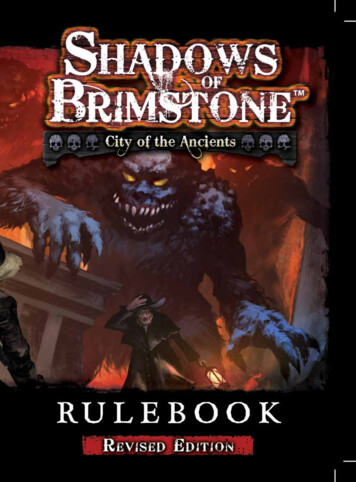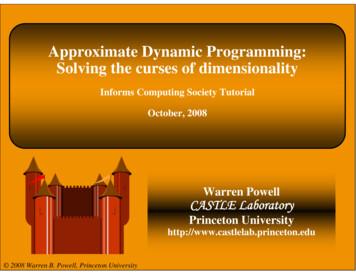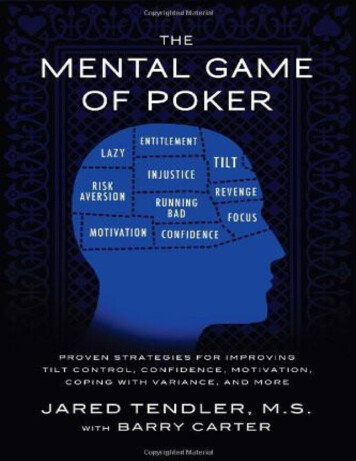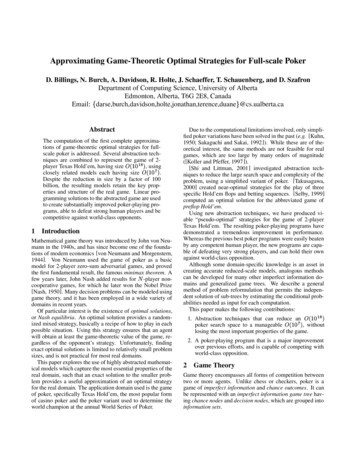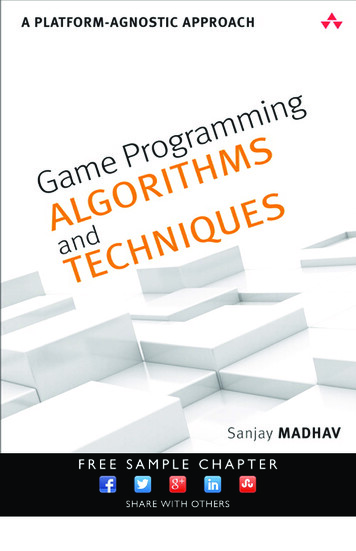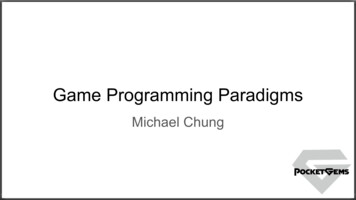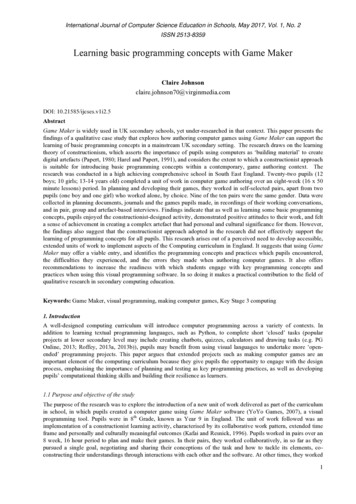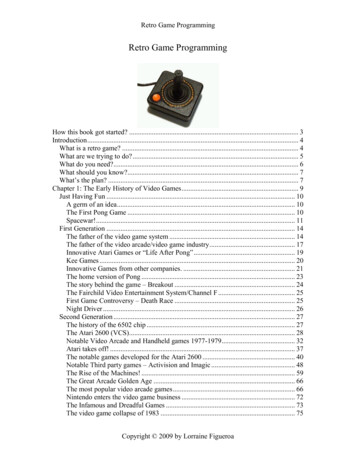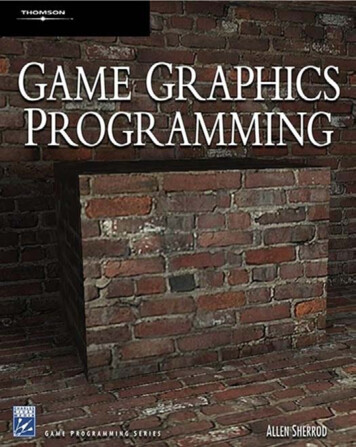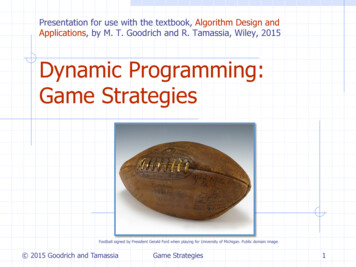
Transcription
Presentation for use with the textbook, Algorithm Design andApplications, by M. T. Goodrich and R. Tamassia, Wiley, 2015Dynamic Programming:Game StrategiesFootball signed by President Gerald Ford when playing for University of Michigan. Public domain image. 2015 Goodrich and TamassiaGame Strategies1
Coins in a Line“Coins in a Line” is a game whose strategy is sometimes askedabout during job interviews.In this game, an even number, n, of coins, of variousdenominations, are placed in a line.Two players, who we will call Alice and Bob, take turns removingone of the coins from either end of the remaining line of coins.The player who removes a set of coins with larger total value thanthe other player wins and gets to keep the money. The loser getsnothing.Alice’s goal: get the most. 2015 Goodrich and TamassiaGame Strategies2
False Start 1: Greedy MethodA natural greedy strategy is “always choosethe largest-valued available coin.”But this doesn’t always work:nnnn[5, 10, 25, 10]: Alice chooses 10[5, 10, 25]: Bob chooses 25[5, 10]: Alice chooses 10[5]: Bob chooses 5Alice’s total value: 20, Bob’s total value: 30.(Bob wins, Alice loses) 2015 Goodrich and TamassiaGame Strategies3
False Start 2: Greedy MethodAnother greedy strategy is “choose odds orevens, whichever is better.”Alice can always win with this strategy, butwon’t necessarily get the most money.Example: [1, 3, 6, 3, 1, 3]Alice’s total value: 9, Bob’s total value: 8.Alice wins 9, but could have won 10.How? 2015 Goodrich and TamassiaGame Strategies4
The General DynamicProgramming TechniqueApplies to a problem that at first seems torequire a lot of time (possibly exponential),provided we have:nnnSimple subproblems: the subproblems can bedefined in terms of a few variables, such as j, k, l,m, and so on.Subproblem optimality: the global optimum valuecan be defined in terms of optimal subproblemsSubproblem overlap: the subproblems are notindependent, but instead they overlap (hence,should be constructed bottom-up). 2015 Goodrich and TamassiaGame Strategies5
Defining Simple SubproblemsSince Alice and Bob can remove coins fromeither end of the line, an appropriate way todefine subproblems is in terms of a range ofindices for the coins, assuming they areinitially numbered from 1 to n.Thus, let us define the following indexedparameter: 2015 Goodrich and TamassiaGame Strategies6
Subproblem OptimalityLet us assume that the values of the coins are storedin an array, V, so that coin 1 is of Value V[1], coin 2 isof Value V[2], and so on.Note that, given the line of coins from coin i to coin j,the choice for Alice at this point is either to take coin ior coin j and thereby gain a coin of value V[i] or V[j].Once that choice is made, play turns to Bob, who weare assuming is playing optimally.nWe should assume that Bob will make the choice among hispossibilities that minimizes the total amount that Alice can getfrom the coins that remain. 2015 Goodrich and TamassiaGame Strategies7
Subproblem OverlapAlice should choose based on the following:That is, we have initial conditions, for i 1,2, ,n-1:And general equation: 2015 Goodrich and TamassiaGame Strategies8
Analysis of the AlgorithmWe can compute the Mi,j values, then, usingmemoization, by starting with the definitions forthe above initial conditions and then computingall the Mi,j’s where j i 1 is 4, then for allsuch values where j i 1 is 6, and so on.Since there are O(n) iterations in this algorithmand each iteration runs in O(n) time, the totaltime for this algorithm is O(n2).To recover the actual game strategy for Alice(and Bob), we simply need to note for each Mi,jwhether Alice should choose coin i or coin j. 2015 Goodrich and TamassiaGame Strategies9
Dynamic Programming: Game Strategies Presentation for use with the textbook, Algorithm Design and Applications, by M. T. Goodrich and R. Tamassia, Wiley, 2015 Football signed by President Gerald Ford when

